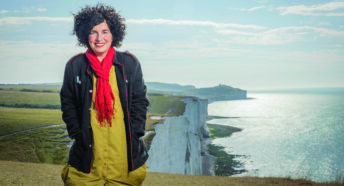Going local for Easter
Easter sees a wide variety of local customs – and they’re not all egg-based…
Many of us are familiar with the custom of exchanging Easter eggs. But beyond the familiar sweet treats, there’s a fascinating variety of curious local traditions.
Depending on where you are in the country, you might find yourself marking the legacy of a generous pair of conjoined twins, taking part in the rough and tumble of an inter-village battle, or even baptising a doll in a magical well.
Eggcellent uses for eggs
Munching on a chocolate egg might be a highlight of an Easter weekend for some of us – but have you ever wondered why we eat egg-shaped treats?
Along with meat, eggs would not have been eaten by Christians during Lent (the six week period of fasting before the Easter celebrations). So it would have once been a hen’s egg that was considered a long-awaited treat!
And as hens would have still been laying throughout the 40 days of fasting, there would have been a surplus of eggs by the time Easter arrived. What to do with all those eggs?
Obviously, many were eaten. But as part of the Easter celebrations, marking Jesus’ resurrection with echoes of older, seasonal rites, eggs might have also been decorated, displayed or used in various games and activities.
From egg rolling to amateur drameggtics
For example, tumbling eggs down hills is a popular Easter pastime. This is said to be symbolic of the stone being rolled away from the entrance to Jesus’ tomb.
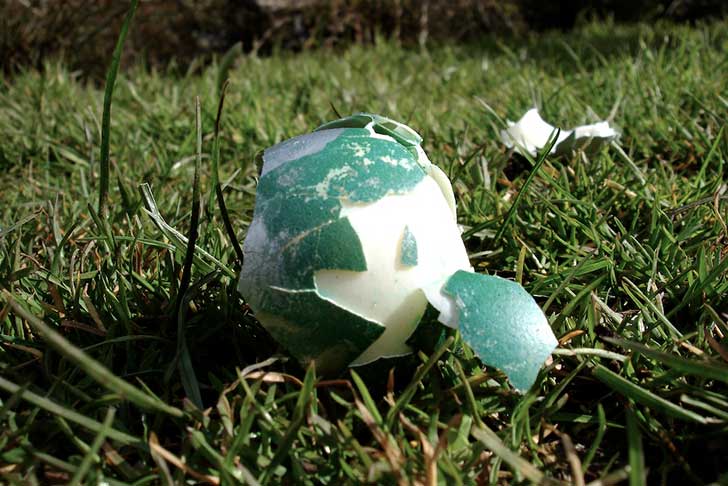
Some egg-rolling events are still around the country including one at Avenham Park in Preston, Lancashire. Afterwards, shells from the eggs that get broken must be smashed into tiny pieces to avoid witches using them as boats!
Egg jarping involves using hard-boiled eggs a bit like conkers, smashing them together to see whose is the toughest! The trick is to crack the shell of your opponent’s egg without breaking your own. Rules were apparently drawn up by the World Egg Jarping Association. These say that each egg must be held firmly in the hands of the contenders, with one player holding theirs with the pointed end upwards.
The other player must bring down the pointed end of their egg to try to crack the other’s shell. If your egg cracks, you’ve lost. But if neither egg’s shell is cracked, the players change places and the jarping continues until only one intact egg remains, held by the victor.
In some local Easter customs, we still see the phrase ‘pace eggs’ used – the word ‘pace’ coming from ‘pasch’, the old English word for Easter. For example, pace egg plays with their colourful characters have traditionally taken place in Heptonstall, West Yorkshire.
The pace egg plays are put on by groups of mummers, actors who specialise in these traditional performances. The plot often involves a hero – sometimes Saint George – battling a villain and being beaten, but brought back to life by a quack doctor’s magic potion and going on to triumph.
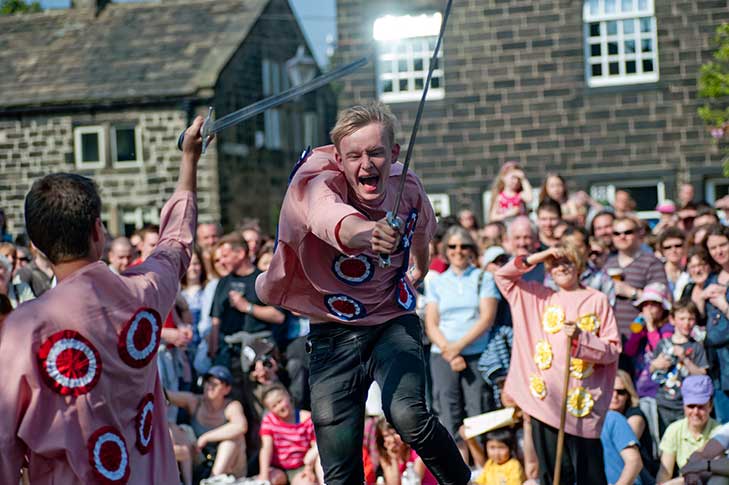
At the end of each performance, the cast might ask for money and food, particularly eggs (although you might have assumed they’d have had their fill of eggs by now…!).
Bottles and battles
In Leicestershire, there’s normally a battle on a much grander scale: bottle kicking. Apparently, this all started in the village of Hallaton where two women were saved from a charging bull by a hare that distracted the belligerent bovine.
To thank God for sending the helpful hare, the women donated money to the church. The vicar agreed that in return he would provide the poorer villagers with a hare pie, loaves, and beer every Easter Monday. The villagers would fight for the food and drink and one year, people from the nearby village of Medbourne snuck in and stole the beer.
The Hallaton villagers worked together to get the beer back, beginning a tradition that has continued for centuries.
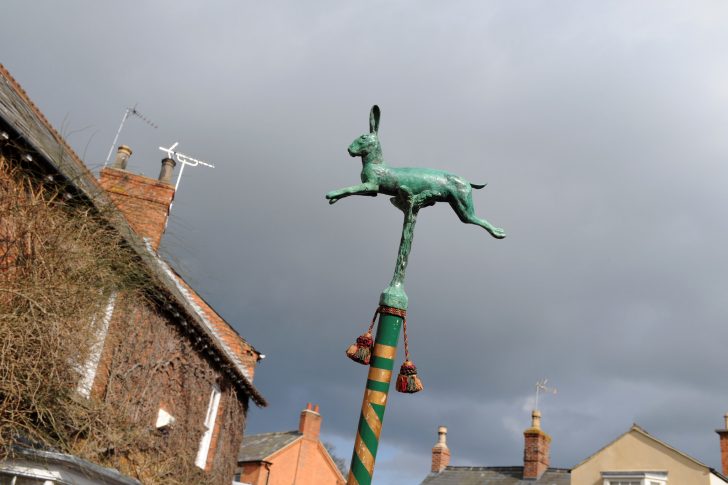
The day begins with a procession and the scattering of the hare pie before the battle begins to take the ‘bottle’, a small barrel, towards each village. The muddy melee, said to have inspired the game of rugby, involves huge crowds of locals and visitors.
The similarly energetic Uppies and Downies in Workington, one of only around 15 surviving ‘mass football’ games, began in the 19th century.
Matches are traditionally held on Good Friday, Easter Tuesday and the following Saturday, all raising money for charity. Around a thousand players on each team battle to get the ball into their opponents’ goal, the Uppies representing the top, or east, side of the town, and the Downies the area downhill on the west.
Friendly village rivalry also drives the bog race (Race of the Boggmen) that takes place each Easter Monday between the locals of Haughley and Great Finborough in Suffolk. This originated in a dispute over whose team of workmen were being given a job at Boyton Hall sometime in the late 1800s.
Now, two teams race to get their scroll, the ‘contract for the work’, handed in at the local pub.
Magical waters
A much calmer ritual would usually occur in Cornwall at Fenton (or Venton) Bebibell, which translates as ‘the well of the little people’. Here, youngsters of all ages can gather for a spot of ‘dolly dunking’.
The ceremony begins with the reading of a blessing to the people and nature around the area, and a reading of a Cornish ode to water. Then dolls are gently dunked under the surface of the water. This Good Friday activity died out in the 1920s but was revived by the Cornish Ancient Sites Protection Network in the early 2000s.
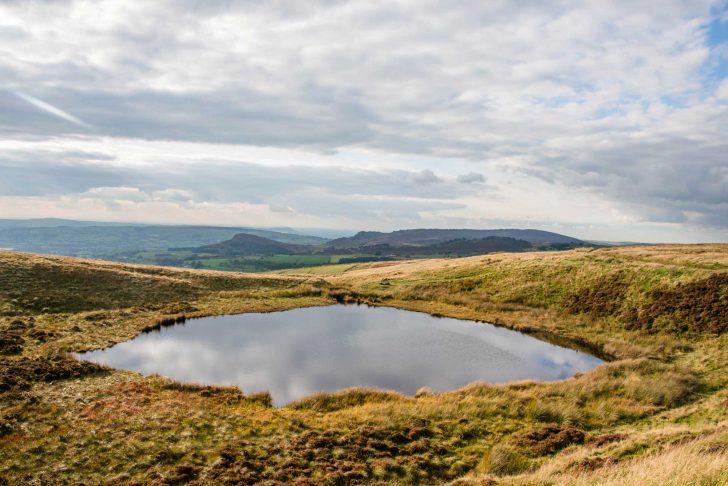
Another enchanting but perhaps more dangerous legend concerns a mermaid in the High Peaks. Mermaid’s Pool, next to Kinder Scout, Derbyshire, is said to contain a real mermaid who appears once a year, at midnight on Easter Sunday. She has the power to grant immortality or drag people into the water to their deaths, depending on her whim!
The Biddenden Dole
Some historians have suggested that the existence of the Biddenden maids, conjoined twins Mary and Eliza Chulkhurst, may also be a legend. But there do seem to be some interesting elements of truth in their story.
Mary and Eliza are said to have been born in Biddenden, Kent, in 1100, joined at the hip and shoulder. Mary died at the age of 34, and Eliza, refusing to be separated from her, passed away six hours later. They left their property, 20 acres of land, to the churchwardens with instructions to use money gained from the rents to provide an annual ‘dole’ for the poor of Biddenden.
The dole involves the handing out of bread, cheese and hard biscuits (‘Biddenden cakes’) depicting the image of the sisters to local widows and pensioners.
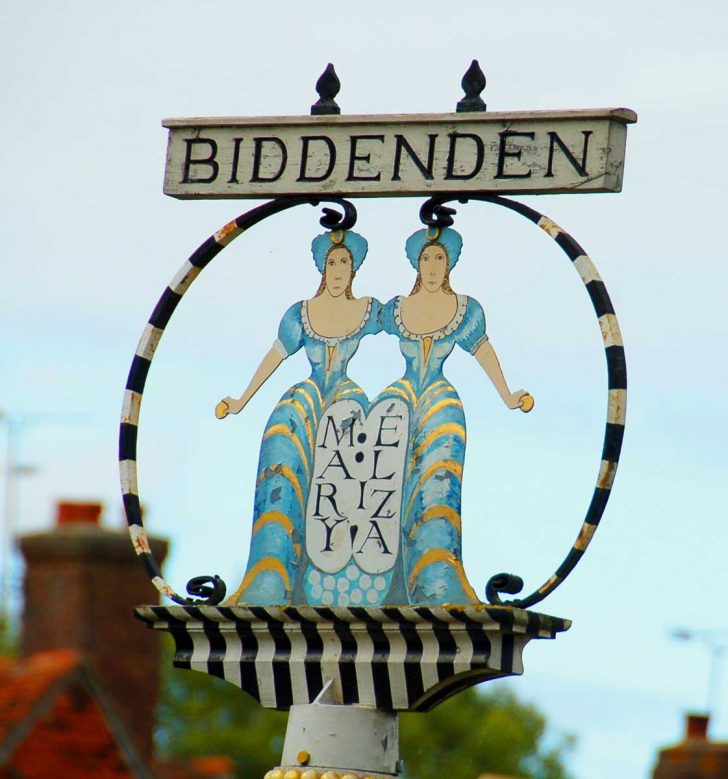
The charity dole tradition continues in several other areas. In Tichborne, Hampshire, locals can take a gallon of flour on 25 March. And Mary Mallatratt’s dole in Mansfield, Nottinghamshire, has been providing buns for local children on Good Friday since 1907.
Easter traditions such as charity doles, games and ceremonies play an important role in bringing communities together and keeping rural life thriving.
Although the origins of some might have become unclear over time, let’s hope they continue – and continue bringing fun, curiosity and a sense of community for many years to come.
Have we missed any from our list? Get in touch on Twitter @CPRE, Facebook or Instagram and share your local Easter customs.




